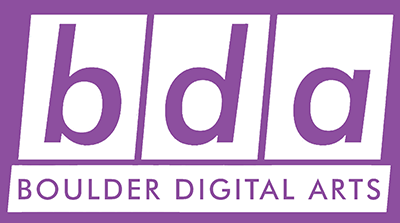Tagged: 11
This topic contains 0 replies, has 1 voice, and was last updated by seka 1 month, 3 weeks ago.
-
AuthorPosts
-
February 5, 2025 at 11:44 AM #22932
Lifestyle Changes to Prevent Varicose Veins
Adopting a healthier lifestyle can make a big difference in managing or preventing varicose veins. Regular exercise, particularly walking or swimming, helps improve circulation and reduces the risk of vein issues. Maintaining a healthy weight relieves extra pressure on the legs, while avoiding prolonged periods of standing or sitting can also help. Elevating your legs at the end of the day encourages blood flow back to the heart. Additionally, a balanced diet rich in fiber and low in sodium can reduce swelling and improve vein health over time.Vein Stripping Surgery: When It’s Needed
In more severe cases of varicose veins, vein stripping surgery may be necessary. This procedure involves removing the damaged veins through small incisions, helping improve blood flow and alleviate symptoms. Although it’s more invasive than other treatments, vein stripping is still an effective solution for large, problematic veins. Recovery from vein stripping typically takes a few weeks, and patients may need to wear compression stockings during the healing process. While it’s less commonly used today due to newer treatments, it can still be the best option for certain cases.Supportive Leg Elevation Techniques
Elevating your legs is one of the simplest and most effective ways to reduce the discomfort of varicose veins. By propping your legs up on a cushion or pillow while resting, you help gravity encourage blood to flow back toward the heart. This can help reduce swelling, alleviate pressure on the veins, and provide a sense of relief, especially after long periods of standing or sitting. It’s recommended to elevate your legs for 15 to 20 minutes several times a day, particularly if you experience pain or heaviness in your legs.Choosing the Right Compression Level
Compression stockings come in different levels of pressure, measured in millimeters of mercury (mmHg). Mild compression (8-15 mmHg) is suitable for preventing varicose veins or managing mild symptoms, while moderate compression (15-20 mmHg) is often recommended for more noticeable vein issues. Higher compression levels (20-30 mmHg or more) are typically prescribed for severe varicose veins or after surgical procedures, so choosing the right level is important for effectiveness.How Compression Stockings Improve Blood Flow
Compression stockings work by applying graduated pressure to the legs, with the greatest pressure at the ankle and gradually decreasing up the leg. This design encourages the upward flow of blood, preventing it from pooling in the lower extremities. As a result, they reduce the risk of swelling and discomfort associated with varicose veins. Improved circulation can also reduce the appearance of veins, making legs look and feel better.Conclusion
Finding effective treatments for Vericose Vein varicose veins can significantly improve both comfort and appearance. Whether through minimally invasive procedures, laser treatments, or lifestyle changes, options are available to relieve pain and prevent further complications. At Charming Skin Vein Clinics in Oak Brook, IL, we specialize in providing personalized care tailored to your specific needs. Our team of experts is dedicated to helping you achieve long-term relief and optimal results.Endovenous Laser Therapy (EVLT)
Endovenous Laser Therapy (EVLT) is a modern treatment that uses laser energy to close off varicose veins. During the procedure, a laser fiber is inserted into the vein through a small incision. The heat from the laser shrinks and seals the vein, which then dissolves over time. EVLT is highly effective for larger varicose veins and offers minimal scarring or downtime compared to traditional surgery. It’s a great option for those looking for a quick recovery, with most patients resuming normal activities within a few days.Radiofrequency Ablation for Vein Closure
Radiofrequency ablation (RFA) is a procedure that uses heat from radiofrequency energy to close off varicose veins. A catheter is inserted into the vein, and the radiofrequency energy is applied, causing the vein to collapse and seal. This procedure is minimally invasive and has been shown to be effective for larger veins. RFA can offer significant relief from pain and discomfort, with a faster recovery time compared to more invasive surgical options. Most people can return to work and daily activities within a few days.Maintenance and Care for Compression Stockings
Proper care is essential to maintaining the effectiveness of compression stockings. They should be washed regularly in cold water and air-dried to preserve the elastic material. It’s important to avoid using fabric softeners, as they can break down the compression. Over time, compression stockings may lose their elasticity, so it’s important to replace them as needed. Regular inspection for wear and tear ensures they continue to provide the necessary support.Sclerotherapy: A Minimally Invasive Solution
Sclerotherapy involves injecting a solution into the problematic veins to cause them to collapse and fade. This treatment is effective for smaller varicose veins and spider veins, and it typically requires only a few sessions. After the injection, the body reabsorbs the treated veins, reducing their appearance and symptoms. The procedure is quick, generally taking 30 minutes or less, and has minimal recovery time. Some patients may experience mild bruising or swelling, but side effects are usually temporary, making it a popular option for many seeking relief. -
AuthorPosts
You must be logged in to reply to this topic.
